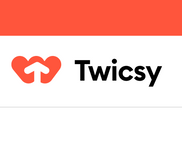Handling Errors
axios.get('/user/12345')
.catch(function (error) {
if (error.response) {
// The request was made and the server responded with a status code
// that falls out of the range of 2xx
console.log(error.response.data);
console.log(error.response.status);
console.log(error.response.headers);
} else if (error.request) {
// The request was made but no response was received
// `error.request` is an instance of XMLHttpRequest in the browser and an instance of
// http.ClientRequest in node.js
console.log(error.request);
} else {
// Something happened in setting up the request that triggered an Error
console.log('Error', error.message);
}
console.log(error.config);
});
Using the validateStatus config option, you can define HTTP code(s) that should throw an error.
axios.get('/user/12345', {
validateStatus: function (status) {
return status < 500; // Resolve only if the status code is less than 500
}
})
Using toJSON you get an object with more information about the HTTP error.
axios.get('/user/12345')
.catch(function (error) {
console.log(error.toJSON());
});






